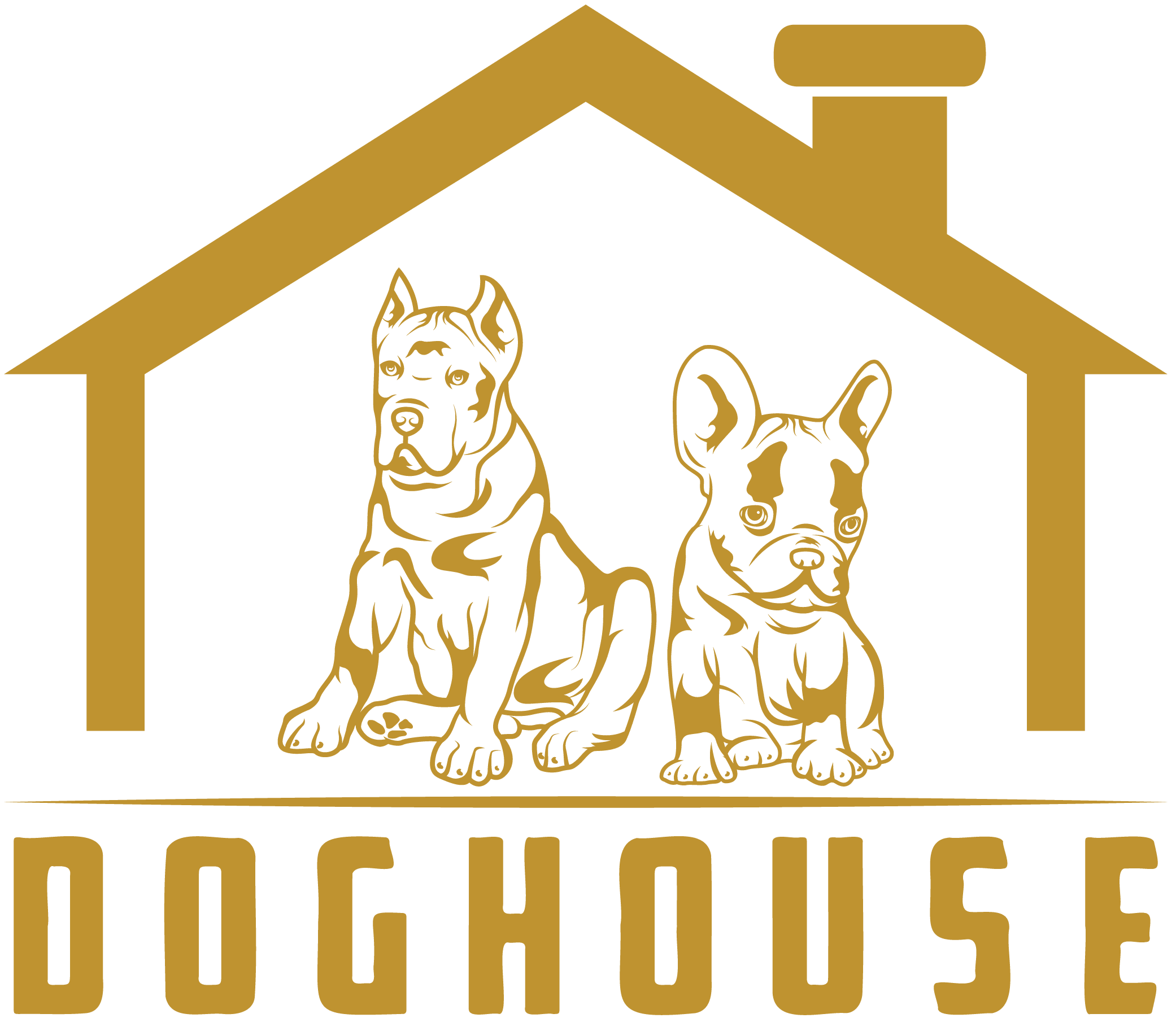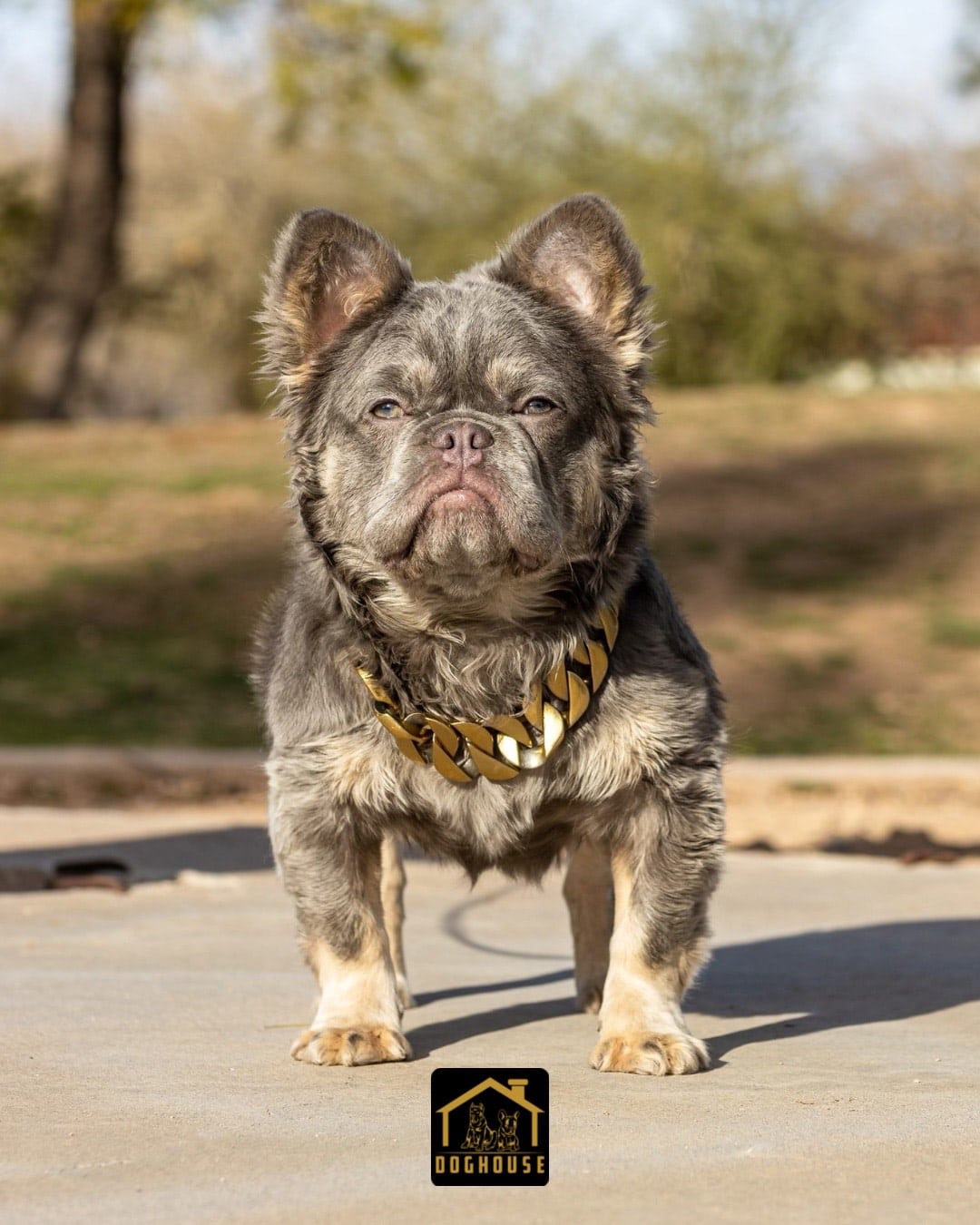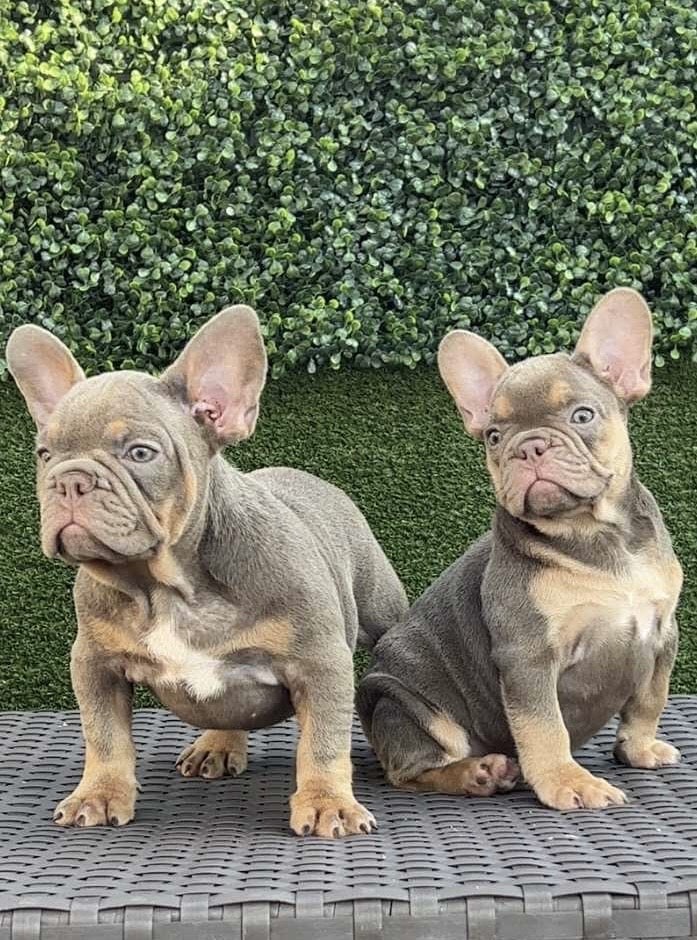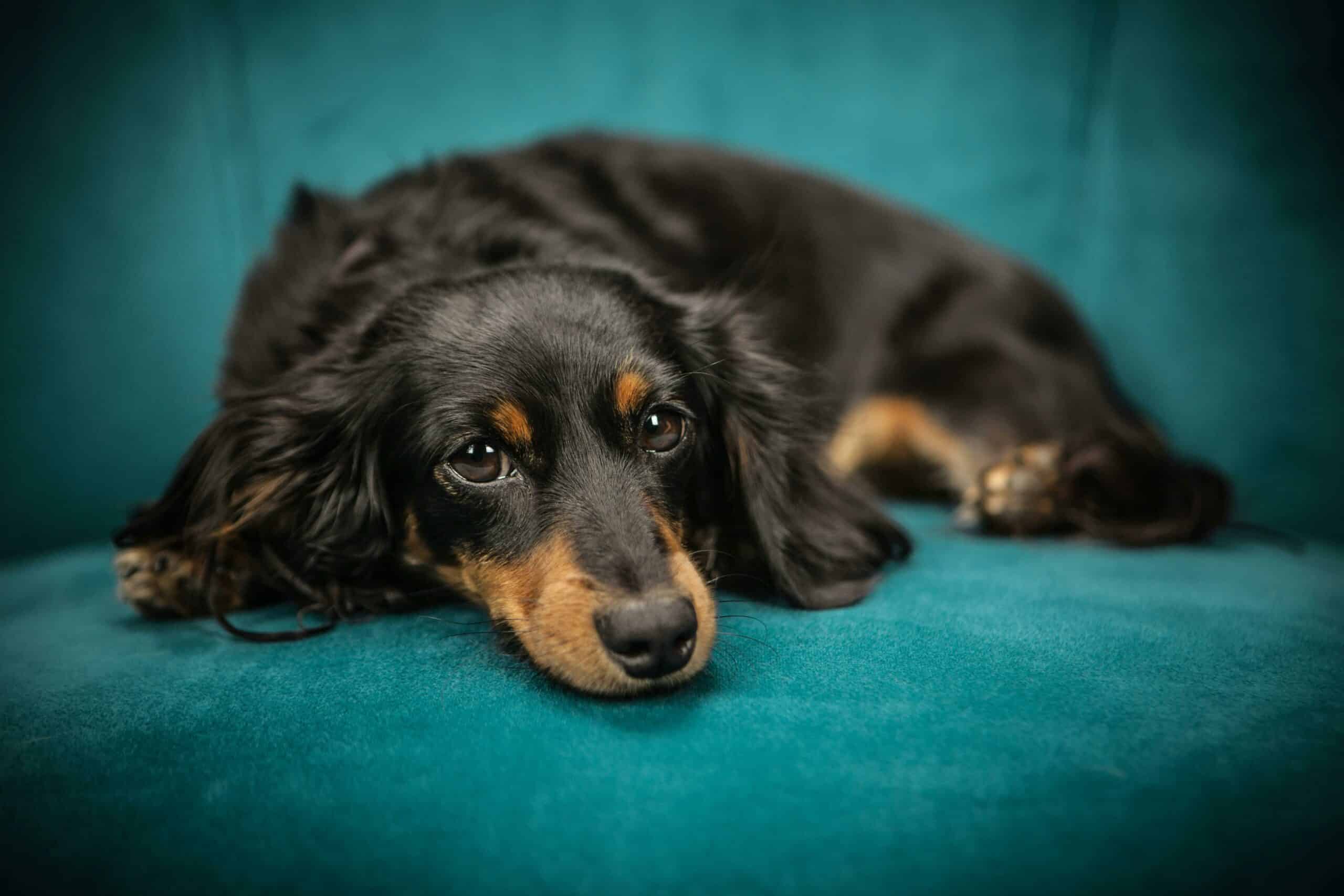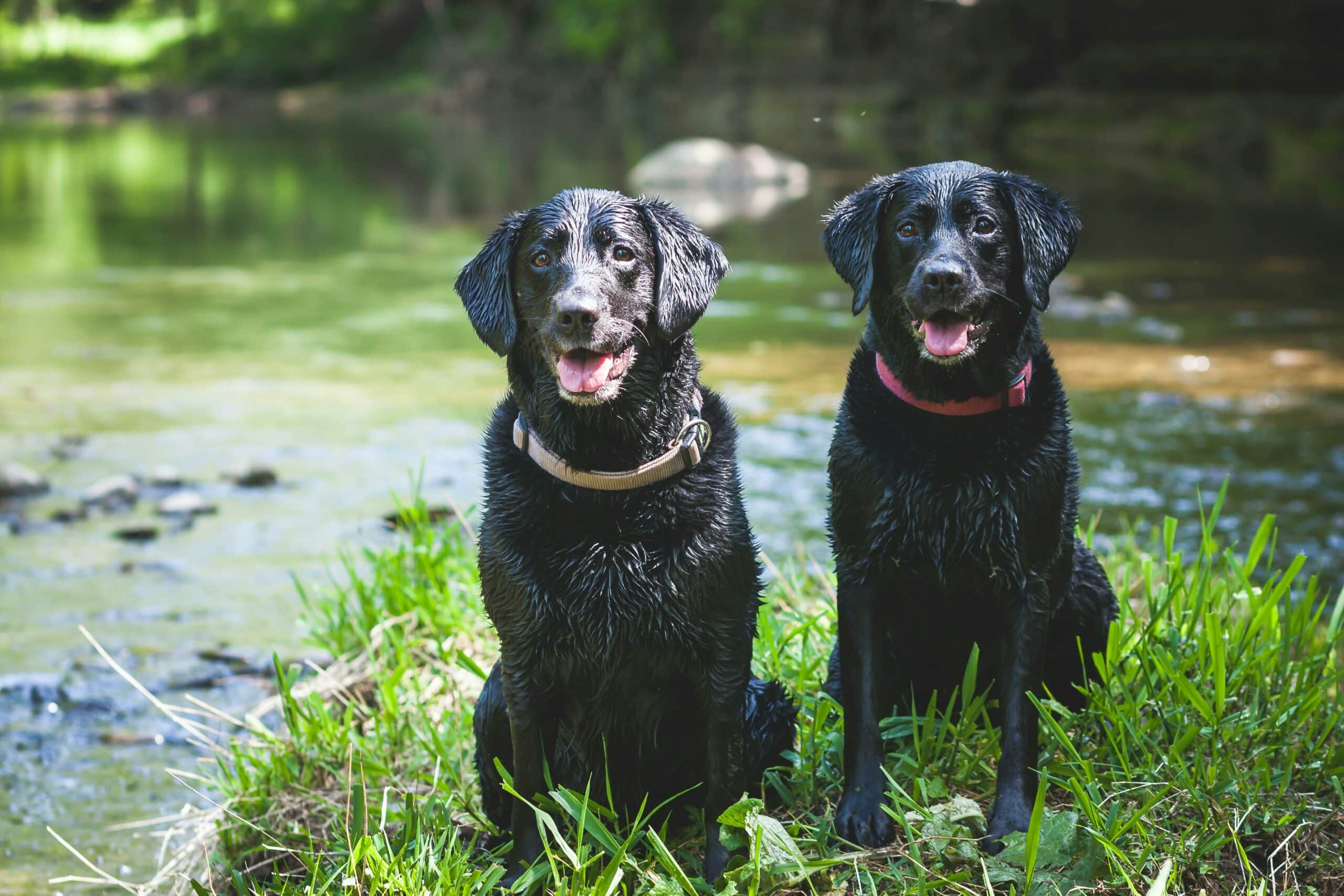The English Bulldog, affectionately known simply as the “Bulldog,” is a breed steeped in history and emblematic of resilience and tenacity. Originating from ancient civilizations and later becoming a symbol of British determination, this breed has undergone significant transformations over the centuries. Characterized by its distinctive wrinkled face, stocky build, and gentle demeanor, the Bulldog stands as a testament to the enduring appeal of a dog that has transitioned from the fierce arenas of bull-baiting to the loving confines of family homes. Today, it is celebrated not just for its iconic appearance, but also for its unwavering loyalty and affectionate nature.
History
The English Bulldog, commonly referred to simply as the “Bulldog,” boasts a history that spans several centuries. Its ancient roots can be traced back to the early civilizations of Mesopotamia and subsequently the Assyrian empire, where the ancestors of the Bulldog were used in the sport of bull-baiting. As the Romans invaded Britain, they encountered these formidable dogs and, impressed by their strength and resilience, brought them back to Rome. By the time of Medieval England, Bulldogs had become central to the brutal sport of bull-baiting, from which they derive their name: “bull” for the bull and “dog” for their primary role. Their physical attributes, including a broad head, short muzzle, and muscular frame, were tailored for this sport, allowing them to latch onto a bull’s nose and breathe simultaneously.
However, the landscape changed in 1835 when bull-baiting was outlawed in England. This ban led to a decline in the Bulldog’s popularity, as they were no longer bred for aggression. Bulldog enthusiasts took it upon themselves to preserve the breed, focusing on breeding out their aggressive traits. This effort gave rise to the modern Bulldog, known for its gentle and affable nature. The 20th century saw a surge in the Bulldog’s popularity in the United States, where they became beloved family pets. Over time, selective breeding has altered the Bulldog’s appearance, leading to a more pronounced underbite, increased wrinkles, and a stockier physique. However, these physical changes have also introduced health challenges, such as respiratory and joint issues, necessitating responsible breeding and care.
Beyond their physical evolution, Bulldogs have made a significant cultural impact. Their symbolism of determination, strength, and resilience has made them a popular choice as mascots for various institutions, including universities and military units. Furthermore, their status as a national symbol of Britain underscores their representation of stoicism and courage. In essence, the journey of the English Bulldog, from a fierce competitor in bull-baiting arenas to a cherished family companion, is a testament to their enduring appeal and adaptability.
English Bulldog Temperament
The English Bulldog is known for its distinctive, lovable temperament, characterized by a mix of courage, affection, and a laid-back attitude. Here are some key aspects of their temperament:
- Affectionate and Loyal: English Bulldogs are known for their strong bonds with their families. They are particularly affectionate towards children and often form close, protective relationships with them.
- Calm and Relaxed: Bulldogs typically have a calm demeanor. They enjoy lounging around and are not as high-energy as some other breeds, making them suitable for various living situations, including apartments.
- Stubbornness: While they are generally easygoing, Bulldogs can also be quite stubborn. This trait can make training a bit challenging, requiring patience and consistency from the owner.
- Friendly: They are generally friendly towards strangers and other pets, although early socialization is important to develop these traits.
- Courageous: Despite their relaxed nature, Bulldogs are brave and have a history as bull-baiting dogs, which contributes to their courageous demeanor.
- Good Natured: Bulldogs are known for their good nature and rarely show aggression. They tend to be amiable dogs that get along well in various environments.
- Sensitive: They are surprisingly sensitive and respond well to positive reinforcement. Harsh treatment can be upsetting to a Bulldog, so gentle, reward-based training is most effective.
- Comical and Playful: Bulldogs often have a comical nature and can be quite playful, especially as puppies. Their unique antics and expressions are a source of amusement for their owners.
- Adaptable: They adapt well to different lifestyles, whether it’s a house with a yard or an apartment. They do, however, need a cool, climate-controlled environment as they are prone to overheating.
- Quiet: Generally, Bulldogs are not known to be excessive barkers. They may bark to alert their owners of something unusual but are otherwise relatively quiet.
The English Bulldog is a breed that combines a relaxed demeanor with loyalty, affection, and a touch of stubbornness. Their easygoing nature makes them excellent companions for a wide range of households, but they do require owners who understand and appreciate their unique characteristics.
How Much Is A Bulldog?
The price of an English Bulldog puppy can vary significantly based on various factors such as lineage, coat color, and breeder reputation. On average, an English Bulldog puppy can cost between $1,500 to $4,500. However, if you’re looking for a puppy from a champion bloodline or one with a rare coat color, the price can be considerably higher. For instance, Bulldogs with tri-color coats could cost up to $8,500. Additionally, Bulldogs with unique coat colors from champion bloodlines can range between $4,500 and $12,000. It’s essential to research and choose reputable breeders to ensure the health and well-being of the puppy. The Fluffy English Bulldog is very new to the genetic pool, first seen in 2021 or 2022. The long-haired version can go for a lot more!
English Bulldog Life Expectancy
The life expectancy of an English Bulldog typically ranges from 8 to 12 years. Most English Bulldogs live between 8 and 10 years, though some can reach 10 to 12 years under optimal health conditions. The median lifespan is approximately 8.4 years. Several factors influence their longevity, including their predisposition to various health issues such as respiratory problems, hip dysplasia, and skin conditions. These health challenges can significantly impact their lifespan. However, with proper care, regular veterinary check-ups, a balanced diet, and a healthy lifestyle, the life expectancy of an English Bulldog can be maximized. Responsible breeding practices also play a crucial role in ensuring the overall health and longevity of these dogs. Understanding and addressing these factors can help extend the life expectancy of an English Bulldog, ensuring they lead a happy and healthy life.
Why do English Bulldogs have a shorter lifespan compared to other breeds?
English Bulldogs tend to have a shorter lifespan due to their unique physical structure and susceptibility to certain health issues. Breeding practices have also played a role in their health challenges.
Can proper care extend the lifespan of an English Bulldog?
Yes, providing an English Bulldog with a well-balanced diet, regular veterinary check-ups, and proper exercise can potentially extend their lifespan.
Are there any studies on the lifespan of English Bulldogs?
One study by the UK Kennel Club and British Small Animal Veterinary Association found that the average lifespan for the English Bulldog was 8.25 years.
How Big Do English Bulldogs Get?
The English Bulldog is a medium-sized, muscular breed known for its loose, saggy skin and distinctive pushed-nose. Males typically weigh between 50 to 55 pounds and stand about 14 to 16 inches tall. On the other hand, females are slightly smaller, weighing in at around 40 to 44 pounds and standing 12 to 14 inches tall. These measurements can vary based on factors such as genetics, diet, and overall health. It’s essential for potential owners to be aware of the Bulldog’s size to provide appropriate care, housing, and exercise for the breed.
The Size of a Bulldogs Neck
The Bulldog’s neck is both sturdy and muscular, typically measuring between 18″ to 24″. This strong build is a testament to the breed’s resilience and strength, making it a defining characteristic.
The Size of a Bulldogs Chest
Complementing the neck is the Bulldog’s broad and deep chest. With an average circumference ranging from 28″ to 34″, it gives the breed a robust and formidable appearance, indicative of its powerful lineage.
The Size of a Bulldogs Head
One of the most distinguishing features of the English Bulldog is its large, square-shaped head. Proportionate to the dog’s overall size, the head’s width and structure are emblematic of the breed’s unique genetics and history.
The Length of a Bulldog
Lastly, the overall length of an English Bulldog, extending from the base of the neck to the tail’s base, generally spans between 16″ to 22″. This compact size, combined with its other features, gives the Bulldog its unmistakable presence.
English Bulldog Weight Chart
| Month | Male Weight Range (lbs) | Female Weight Range (lbs) |
|---|---|---|
| 1 | 3-7 | 2-6 |
| 2 | 7-14 | 6-12 |
| 3 | 12-20 | 10-18 |
| 4 | 18-28 | 16-26 |
| 5 | 25-35 | 22-32 |
| 6 | 30-40 | 28-38 |
| 7 | 35-45 | 32-42 |
| 8 | 40-50 | 35-45 |
| 9 | 43-53 | 38-48 |
| 10 | 45-55 | 40-50 |
| 11 | 48-58 | 42-52 |
| 12 | 50-60 | 45-55 |
English Bulldog Size by Month Chart
| Month | Female Height (inches) | Male Height (inches) |
|---|---|---|
| 1 | 4-5 | 4.5-5.5 |
| 2 | 6-7 | 6.5-7.5 |
| 3 | 7-8 | 8-9 |
| 4 | 8-9 | 9-10 |
| 5 | 9-10 | 10-11 |
| 6 | 10-11 | 11-12 |
| 7 | 11-12 | 12-13 |
| 8 | 11.5-12.5 | 12.5-13.5 |
| 9 | 12-13 | 13-14 |
| 10 | 12-13 | 13-14.5 |
| 11 | 12-13.5 | 13.5-15 |
| 12 | 12-14 | 14-16 |
Bulldog Colors
What Colors do Bulldogs come in? English Bulldogs come in a variety of colors, and these colors can be categorized into standard and rare colors.
Standard Colors:
- Fawn: A light tan color that can range from pale to a darker deer-like shade.
- Brindle: A mix of dark and light stripes over a base color, often resembling a tiger-stripe pattern.
- White: Pure white without any markings.
- Red: A rich, deep color that can range from a light copper-red to a deep reddish-brown.
- Sable: A red base coat with a black-tipped overlay.
Rare Colors:
- Blue/Gray: A diluted black that gives a blue or gray appearance. This color is often associated with blue eyes.
- Chocolate: A deep brown color.
- Black: Pure black without any brindle markings.
- Lilac: A diluted chocolate color that appears as a pale purple or silvery hue.
- Merle: A patterned coat with patches of diluted colors and speckles.
It’s important to note that while rare colors are often sought after due to their unique appearance, they are not recognized as standard colors by some kennel clubs, including the American Kennel Club (AKC). When considering purchasing an English Bulldog, it’s essential to prioritize health and temperament over coat color. Some rare colors can be associated with health issues, so it’s crucial to work with reputable breeders who prioritize the well-being of the dogs.
English Bulldog Grooming
English Bulldogs, with their distinct appearance and unique coat, have specific grooming needs to ensure they remain healthy and comfortable. Here’s a breakdown of the grooming requirements for English Bulldogs:
1. Bathing: English Bulldogs don’t require frequent baths, but it’s essential to give them a thorough wash every few weeks or when they get particularly dirty. Use a gentle dog shampoo that’s suitable for their skin type. Bulldogs have sensitive skin, so avoid harsh chemicals or fragrances.
2. Wrinkle Care: One of the most distinctive features of English Bulldogs is their facial wrinkles. These folds can trap moisture, dirt, and debris, leading to infections or irritations. It’s crucial to clean these wrinkles regularly with a damp cloth and then dry them thoroughly. Some owners also apply a thin layer of petroleum jelly or a specific wrinkle cream to prevent chafing.
3. Ear Cleaning: Bulldogs have medium-sized ears that can accumulate wax and debris. Clean their ears weekly using a vet-recommended ear cleaner and a cotton ball. Avoid using cotton swabs as they can push debris further into the ear.
4. Nail Trimming: Their nails should be trimmed regularly, usually every few weeks, to prevent overgrowth. Overgrown nails can cause discomfort and affect the dog’s gait. Use a dog nail clipper and be cautious not to cut into the quick.
5. Teeth Brushing: Dental care is vital for Bulldogs as they are prone to dental issues. Brush their teeth several times a week using a dog-specific toothbrush and toothpaste. Regular brushing helps prevent tartar buildup and gum disease.
6. Coat Brushing: Even though English Bulldogs have short hair, they do shed. Brushing their coat once or twice a week with a soft-bristle brush or a rubber grooming mitt can help remove loose hairs and distribute natural oils, keeping their coat shiny and healthy.
7. Eye Care: Bulldogs can sometimes have tear stains under their eyes. Wipe their eyes gently with a soft, damp cloth to remove any discharge. If tear staining is a consistent issue, consult with a vet for recommendations on cleaning solutions or treatments.
8. Tail Pocket Cleaning: Some Bulldogs have a tail pocket – a small indentation beneath their tail. This pocket can trap dirt and moisture, so it’s essential to clean it regularly to prevent infections.
Diet and Exercise: While not directly related to grooming, a balanced diet and regular exercise can significantly impact the health of their coat and skin. Ensure they receive high-quality dog food and have regular play sessions to maintain a healthy weight and good overall health.
In conclusion, while English Bulldogs don’t require intensive grooming like some long-haired breeds, their unique features demand regular attention. Establishing a consistent grooming routine will ensure your Bulldog remains clean, comfortable, and healthy.
English Bulldog Health Issues
English Bulldogs, while beloved for their unique appearance and endearing temperament, are unfortunately prone to a variety of health issues due to their brachycephalic (short-nosed) nature and specific breed characteristics. Here are some of the most common health issues associated with English Bulldogs:
1. Brachycephalic Syndrome: Due to their short noses, Bulldogs often have narrowed nostrils and elongated soft palates, leading to breathing difficulties. This can result in snoring, wheezing, and overheating, especially in hot or humid conditions.
2. Hip Dysplasia: This is a genetic condition where the hip joint doesn’t fit into the hip socket properly. It can lead to arthritis and pain, especially in older Bulldogs.
3. Cherry Eye: Bulldogs are prone to a condition called “cherry eye,” where the gland in the third eyelid prolapses, creating a red, swollen appearance in the corner of the eye.
4. Entropion: This is a condition where the eyelids roll inward, causing the eyelashes to rub against the eye’s surface, leading to irritation and potential injury.
5. Skin Infections: The wrinkles and skin folds that give Bulldogs their distinctive appearance can trap moisture and debris, leading to bacterial and fungal infections if not cleaned regularly.
6. Heat Sensitivity: Bulldogs are particularly sensitive to heat and can quickly suffer from heatstroke if exposed to high temperatures for extended periods.
7. Dental Problems: Due to their compact jaw structure, Bulldogs often have crowded or misaligned teeth, making them prone to dental diseases.
8. Tail Problems: Some Bulldogs have screw-shaped tails that can become infected if dirt and moisture get trapped in the tail pocket.
9. Heart Conditions: Bulldogs can be prone to certain heart conditions, including pulmonic stenosis, a condition where the blood flow from the heart’s right ventricle is obstructed.
10. Degenerative Spine Disease: This condition affects the spinal cord, leading to weakness in the hind legs.
11. Obesity: Bulldogs have a tendency to gain weight, which can exacerbate many of the health issues mentioned above.
12. Reproductive Issues: Due to their body structure, many Bulldogs require cesarean sections to give birth. They can also have issues with infertility.
Conclusion
In conclusion, the English Bulldog, with its distinctive appearance and endearing temperament, has captured the hearts of many. While they are undeniably charming and make for loyal companions, prospective owners must be well-informed about the breed’s specific needs, from their unique grooming requirements to potential health concerns. The initial cost of acquiring a Bulldog is just the beginning; the commitment to their well-being spans across their lifespan, which includes regular veterinary care, a suitable diet, and proper attention to their physical and emotional needs. By understanding the intricacies of the breed, owners can ensure a fulfilling and harmonious relationship with their English Bulldog, making the journey of companionship truly rewarding.
English Bulldog FAQs
How much does an English Bulldog cost?
The initial purchase price of an English Bulldog can vary based on factors such as pedigree, breeder reputation, and location. In 2023, the average price for a Bulldog in the US is between $1,500 to $4,000, while in the UK, it ranges from £2,000 to £4,000.
Why are English Bulldogs so expensive?
Bulldogs are expensive due to the costs associated with breeding, including artificial insemination and C-section deliveries. Additionally, the breed’s popularity and unique appearance contribute to the high demand and price.
What are the additional costs of owning a Bulldog?
Beyond the initial purchase price, Bulldog owners should budget for expenses like food, grooming, regular vet check-ups, vaccinations, and potential health issues specific to the breed.
How much does it cost to groom an English Bulldog?
Grooming costs can vary based on location and the specific services required. On average, a basic grooming session can range from $30 to $50.
Are there any health issues I should be aware of that might increase the cost of ownership?
Yes, English Bulldogs are prone to several health issues, including brachycephalic syndrome, hip dysplasia, and skin infections. Regular vet visits and potential treatments can add to the overall cost of ownership.
Is pet insurance recommended for English Bulldogs?
Given the breed’s susceptibility to various health issues, many Bulldog owners opt for pet insurance to help manage potential medical costs.
How much does it cost to feed an English Bulldog?
The monthly cost of feeding a Bulldog can range from $50 to $70, depending on the quality of the dog food and the dog’s specific dietary needs.
Are there any hidden costs I should be aware of when owning a Bulldog?
Potential hidden costs can include emergency vet visits, specialized diets, or treatments for unexpected health issues.
How do Bulldog prices compare between the US and the UK?
While the price range is somewhat similar, Bulldogs tend to be slightly more expensive in the UK due to factors like breeding costs and demand.
Is it cheaper to adopt a Bulldog from a rescue organization?
Yes, adopting from a rescue can be a more affordable option, with adoption fees typically ranging from $250 to $500. However, availability can be limited, and there may be additional costs for medical care or behavioral training.

